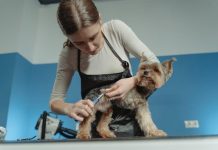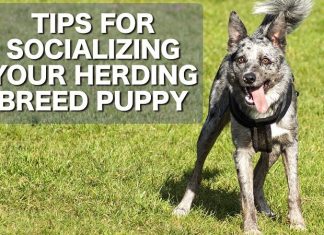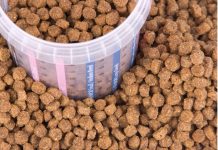Welcoming a new puppy into your home is a joyous occasion, filled with cuddles, playtime, and the delightful antics of your furry friend. However, along with the joys of puppy parenthood comes the responsibility of safeguarding your little one from various health threats, including the pesky problem of fleas. Fleas can cause significant discomfort for your puppy and, if left unchecked, may lead to more serious health issues. As we step into this year, it’s crucial to arm yourself with the latest and most effective strategies for keeping these unwelcome guests at bay. In this article, we’ll explore the best ways to prevent fleas on puppies, offering you practical tips and expert advice to ensure your puppy stays healthy, happy, and flea-free. Let’s dive into creating a comfortable, itch-free environment for your newest family member.
Choosing the Right Flea Prevention Products for Your Puppy
When it comes to keeping your puppy safe from those pesky fleas, selecting the right product is crucial. Puppies have delicate skin and a developing immune system, so it’s essential to choose flea prevention solutions that are both effective and gentle. Start by consulting with your veterinarian to understand the most suitable options based on your puppy’s age, weight, and overall health. Topical treatments and oral medications are popular choices, but each comes with its own set of considerations.
- Topical Treatments: These are applied directly to your puppy’s skin and provide protection by killing fleas on contact. Look for formulations specifically designed for puppies, as they are less likely to irritate sensitive skin.
- Oral Medications: Administered in the form of a chewable tablet, these treatments work from the inside out, killing fleas before they have a chance to reproduce. They can be a convenient option if your puppy doesn’t like topical applications.
- Natural Solutions: If you prefer a more holistic approach, there are products made from natural ingredients like essential oils. While generally considered safe, it’s still important to ensure these are appropriate for puppies.
Remember to always follow the manufacturer’s instructions and never use products intended for adult dogs on puppies. Keeping your puppy’s environment clean, including regular washing of bedding and toys, also plays a critical role in preventing flea infestations.

Natural Remedies to Keep Fleas at Bay
Embracing natural remedies can be a gentle yet effective way to protect your puppies from fleas. One of the most popular methods is using essential oils. Oils such as lavender, eucalyptus, and peppermint not only repel fleas but also leave your puppy smelling delightful. Dilute a few drops with water and gently mist it onto your puppy’s fur, avoiding the face and eyes. This natural spray can be applied weekly or whenever your furry friend needs a freshen-up.
- Apple Cider Vinegar: Mix a teaspoon into your puppy’s water bowl. This makes their skin slightly acidic, a trait fleas detest.
- Lemon Water: Boil a sliced lemon in water, let it cool, and use the solution as a rinse after a bath. It’s a safe, flea-repelling citrus splash.
- Herbal Flea Collars: Create a homemade flea collar by soaking a bandana in a mix of essential oils and water. Once dry, tie it around your puppy’s neck for a stylish and functional accessory.
Additionally, maintaining a clean environment is crucial. Regularly vacuuming carpets and washing your puppy’s bedding can prevent flea infestations. Remember, while these remedies are natural, always monitor your puppy for any allergic reactions and consult with your vet to ensure the best care for your pet.
Establishing a Regular Grooming Routine for Flea Control
Developing a consistent grooming schedule is a cornerstone in keeping your puppy flea-free. Start by brushing your puppy’s coat regularly to remove dirt and debris that can harbor fleas. Opt for a flea comb, which is designed to trap fleas and their eggs, ensuring you capture even the smallest pests. Frequent brushing not only keeps your puppy’s coat healthy but also provides an opportunity to check for any signs of fleas or irritation.
Incorporate bathing into your routine, using a gentle puppy-safe shampoo. Many shampoos are formulated to deter fleas, providing an additional layer of protection. While bathing, pay close attention to areas where fleas tend to congregate, such as the neck, behind the ears, and the base of the tail. Post-bath, ensure your puppy is thoroughly dried to prevent any skin issues. Regular grooming not only strengthens the bond between you and your puppy but also acts as a proactive measure against fleas.
- Brush your puppy at least twice a week.
- Use a flea comb to identify and remove fleas.
- Bathe your puppy monthly or as needed with a flea-repelling shampoo.
- Inspect commonly affected areas for flea activity.
- Keep your puppy’s bedding clean and wash it regularly.

Creating a Flea-Free Environment at Home
To maintain a sanctuary for your furry friend, it’s essential to address every nook and cranny of your living space. Start by regularly vacuuming carpets, rugs, and upholstery, which are popular hideouts for fleas and their larvae. Ensure to empty the vacuum bag or canister outside the home to prevent re-infestation. Wash your puppy’s bedding frequently in hot water and dry it on the highest heat setting. This not only eradicates fleas but also removes eggs and larvae. Consider using flea-repelling sprays or powders on your carpets and furniture, opting for natural options if you prefer a chemical-free approach.
Creating a barrier between the outdoors and indoors is also crucial. Keep your lawn trimmed and clear away debris to minimize outdoor flea habitats. Add plants like lavender, rosemary, and mint to your garden, as their natural scents repel fleas. Indoors, use essential oil diffusers with flea-repelling oils like eucalyptus or lemongrass. Inspect your puppy regularly, especially after outdoor play, to catch any hitchhikers before they settle in. By staying vigilant and proactive, you can ensure a safe and comfortable environment for your beloved pet.
















